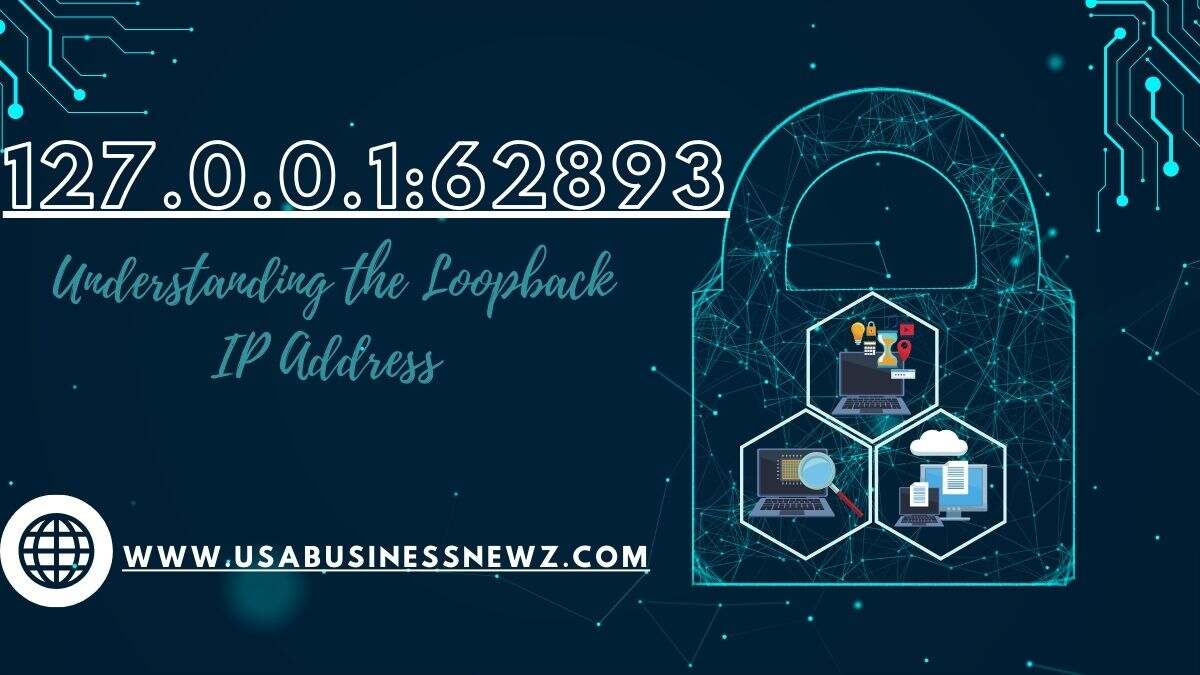The loopback IP address is an address having the first octet 127. 0. 0. 1, is an intra special purpose address assign to computers to aid in their communication. It rightfully occupies the Internet Protocol IP address of 127. 0. 0. 0 to 127. 255. 255. 255 which is especially reserve for traffic that becomes a loopback in the internetwork. This address is assume to be important for communication between units of the system, as it enables a device under a system to communicate with itself without the necessity of accessing the outside network. In this article we will explore 127.0.0.1:62893 and its features.
The Role of Port 62893 in Networking
In the context of computer networking, a port is a channel of data transmission as is a port in other domains. Used to differentiate between several forms of traffic in a network since they are identify by unique numbers. Port 62893 is an example of port that is not associate with any service across the globe and therefore can be use for many user-defined applications.
Port 62893 is consider to be an unprivileged port which means that a developer can use this port to build a specific service or server that must await connections. This flexibility makes it easier to operate these governmental services hence enabling the different applications in the constituted environment to communicate and share data with ease.
Publishing a Service on 127.0.0.1:62893
Some of the methods of creating a service on the loopback address 127. 0. 0. 1 and tying it to the port number 62893 is quite standard in development and testing environments. Here’s a step-by-step guide on how to set up such a service:
1. Initiating a Socket: The first step in establishing a service is to open a socket connectable by the loopback address 127. 0. 0. 1. A socket is an address use by different processes in the course of data transmission across a network.
2.Connecting the Socket to the port 62893: After that the socket is created it has to be binded to a port day port 62893. This can be done with the help of different network programming libraries; for instance, Python’s socket, Java’s ServerSocket, or C’s socket.
3. Listening for Connections: In the case of the service that is to run on the desire port, it must be told to listen to the connections. That is, it holds the service that will enable other applications to connect to it using a given port.
4. Establishing Data Exchange: After the connection has been establish it is then possible to send and receive data between the service and the applications that are connecting. This step is important to check how the service performs under different types of data and conditions of the network.
Benefits of Using 127.0.0.1:62893
It is recommend to launch a service on local loop 127.0.0.1:62893 comes with several advantages more specifically for developers and network administrators functioning in development or testing grounds.
Isolated Testing Environment
Another important benefit of the loopback address is a possibility to create an isolated environment. This specific approach guarantees that the system remains secure from outside traffic or threats while it is being developed. Web servers, application servers and network configurations among others can be test on the simulator before they are implement in the actual world.
Enhanced Security
Yet another advantage of applying 127.0.0.1:62893 One is improved security that comes with user authentication security to the site. It should be noted that the loopback address is an internal one and thus cannot be accessed from a network that is outside of the computer. This makes localhost perfect for executing functions that demand a lot of security for instance a command to operate a database or execute certain scripts.
Performance Optimization
Data exchange between services that are on the same localhost is relatively very fast because the data is not transfer out of the host computer. This speed is especially an advantage when doing performance testing and debugging. By using developer huddles, the developers are capable of easily noting a problem and addressing. It because huddling is usually done in a group of a few employees and not over the extend network.
Common Issues And Troubleshooting Tips

While using 127.0.0.1:62893 is generally straightforward, users may encounter some common issues. Below are some tips for troubleshooting these problems:
Service Not Listening on Port 62893
If a service is not available on port 62893, it could be due to several reasons:
- Incorrect Configuration: Make certain that the service is properly set to listen in the TCP port 62893.
- Service Not Running: Ensure it is currently running. If not, start the service.
- Port Conflict: It is also important to check if there is not some other service using port 62893. To check which ports are in use, it is advisable to use some utilities such as netstat or lsof.
- Firewall Settings: Check to ensure that the firewall implementation permits traffic to pass through port 62893 or whatever port set by the organization.
Connection Refused Errors
It might sound strange but most often in connection with “Connection refused” we share an error 127. 0. 0. Moreover, you may get the error that 1:62893 is not running or the local firewall is blocking the connection. In order to address this problem, the service needs to be restart, and there may be a problem with the firewall settings.
Address Already in Use
The ‘address already in use’ message signifies that another service is using port 62893. The way to get around this is to stop the current service or assign a new port for your application.
Latency And Performance Issues
If you experience latency or performance issues, consider the following:
- Resource Management: Look for processes that probably consume a lot of resources and are causing harm to the local outcome.
- Code Optimization: Minimize the amount of resources that are necessary for the application to operate at its best.
- Background Services: Always check that there are no background services that could be compromising the network.
Configuration Issues
Misconfigurations make a service not to operate as required. It is also a good practice to always verify configuration files for syntax errors as well as verify the correctness of all set parameters.
Pros and Cons
Pros:
- Isolated Testing Environment: 127.0.0.1:62893 provides a basic level of security as well as isolation from the rest of the networks thus serving well as a development network.
- Enhanced Security: They stay in the local domain and, hence, do not expose the system to the threats originating from the outside.
- High Performance: This coming of the packets within the localhost environment makes the testing and debugging to be quick.
Cons:
- Limited to Local Use: Services on 127.0.0.1:62893 cannot be interacted with outside the laboratory, that limit real-life testing.
- Port Conflicts: A management crisis can lead to port clashes hence destruction and interruption of the service.
- Complex Troubleshooting: Some of what one might call ‘infrastructureisms’ such as “address already in use” are tricky to debug.
Conclusion
Using the loopback address 127.0.0.1 and port 62893 offers a secure and efficient way to test and develop network services. By understanding how to set up a service on this address and port combination, leveraging their benefits, and knowing how to troubleshoot common issues, developers and network administrators can create robust and reliable applications. Whether for isolated testing, enhanced security, or performance optimization, 127.0.0.1:62893 is a powerful tool in the developer’s arsenal.
FAQ’S
127.0.0.1 is a loopback IP address use by a computer to communicate with itself, often for testing and development purposes.
Port 62893 is not globally assign to any specific service, making it ideal for custom applications or services in development environments.
It provides a secure, isolated environment for testing applications without external network interference.
Terminate the service occupying the port or assign a different port to your application.
No, services on 127.0.0.1 are only accessible from the local machine.



